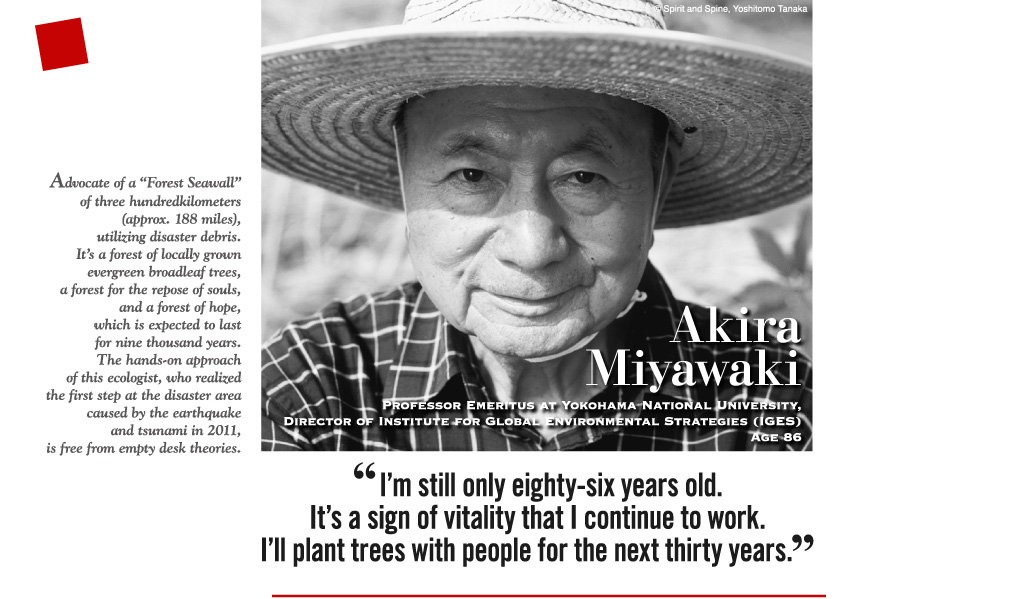
Dr. Miyawaki, who directs the project, had just returned from a planting endeavor in Kenya the day before this planting. His work sites are scattered around the globe. When the Great East Japan Earthquake occurred in 2011, he was carrying on a forest investigation in Java. He immediately returned and began researching the affected areas, and recommended the creation of forest seawalls. He moved forward vigorously for the realization of the project, holding symposia in various places as well as the affected areas, and even engaged in direct negotiations with the Prime Minister.
Nothing proceeded within the traditional framework and regulations. The mayors of the affected area considered debris as relics, not waste, and agreed with Miyawaki’s ideas. Large companies actively supported those towns, which lacked human resources. Unimaginable energy from his short stature dynamically moves citizens, companies, and government. What he is looking at is life and the future. It is his wish that a small seedling will become a great monument equipped with important functions for later generations.

Akira Miyawaki
Born in Okayama Prefecture in 1928. Doctor of Science. Graduated from Department of Biology, Hiroshima University of Literature and Science. Joined the Reinhold Tüxen in Stolzenau, Germany, as a visiting researcher. He was Professor at Yokohama National University and President of the International Association for Ecology, and then assumed his current post. He has directed tree planting at more than 1,700 locations both in and out of Japan, and planted more than 40 million trees. Published numerous books including the recent “Mori no Chyojo ga Nihon wo Sukuu” (The Great Wall of Forest Saves Japan).Cooperation: IGES, Yokohama Rubber Co., Ltd., Otsuchi-cho, Iwate Prefecture.
This article originally appeared in “Shinsei” magazine, August 2012 issue, published by RINRI Institute of Ethics. Partially rewritten to update for this internet release.





































































































